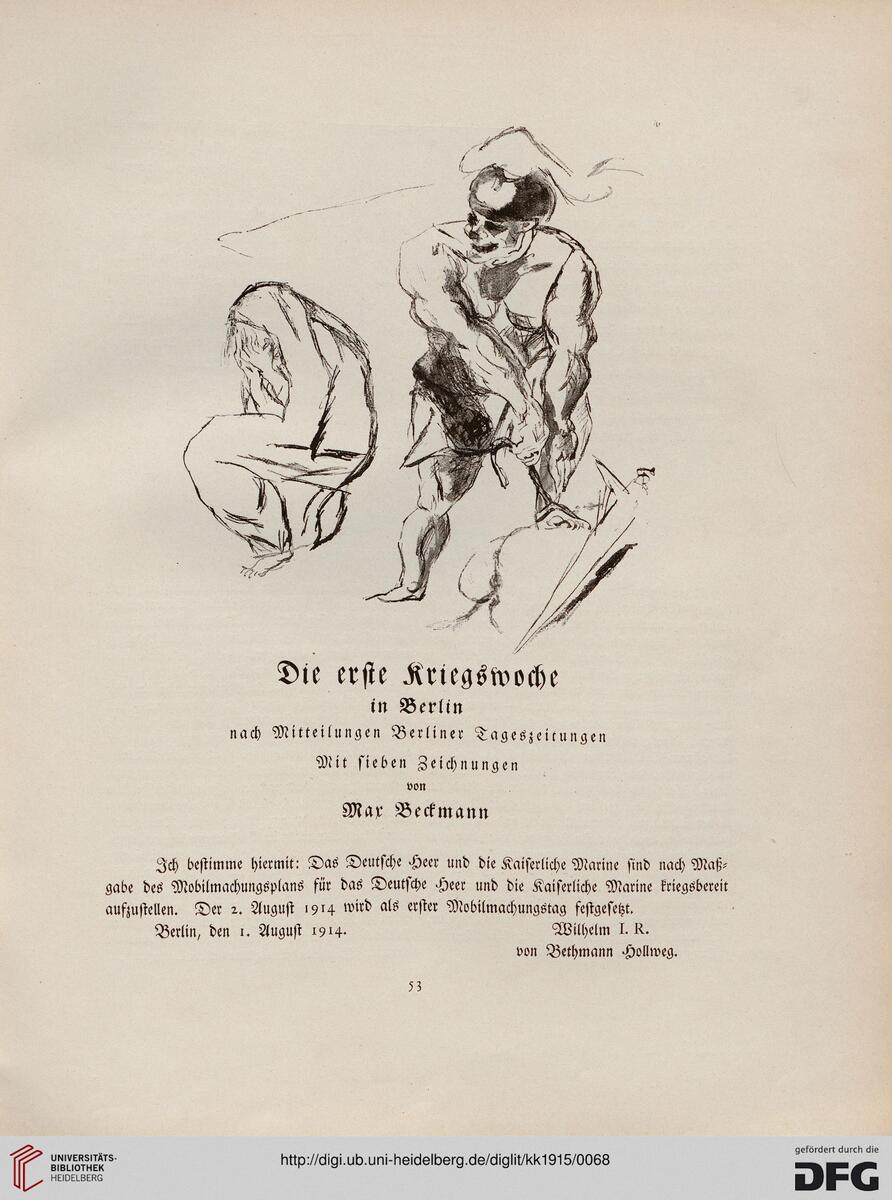Source

Source: Max Beckmann, Mars Unleashed and Woman Mourning, in
Kunst und Künstler, Heft 2, 1915, p.
53.
https://doi.org/10.11588/diglit.4714#0068
The German artist Max Beckmann (1884-1950) volunteered as a medic in the fall of 1914. He was first sent to East Prussia and later to Belgian Flanders. During this period, Beckmann recorded his impressions of the war in numerous etchings and drawings. They depict the horror of the war as he experienced it. In October 1914 he wrote, "My will to live is at present stronger than ever, despite the fact that I have already experienced terrible things and have myself died several times. But the more often one dies, the more intensively one lives. I drew; that secures one against death and danger." (Stephan Reimertz, Max Beckmann. Munich: Luchterhand, 2003, p. 105). In the summer of 1915, the 31-year-old suffered a physical and mental breakdown. In 1917, he finally resigned from military service.
This drawing appeared in the first war-time edition (1915) of the journal Kunst und Künstler, published by Bruno Cassirer. Beckmann contrasts the scantily clad, muscular god of war, his face reminiscent of a scull, with a cowering woman wrapped in – and nearly hidden by – a shroud.

Source: Max Beckmann, Mars Unleashed and Woman Mourning, in
Kunst und Künstler, Heft 2, 1915, p.
53.
https://doi.org/10.11588/diglit.4714#0068
UB Heidelberg